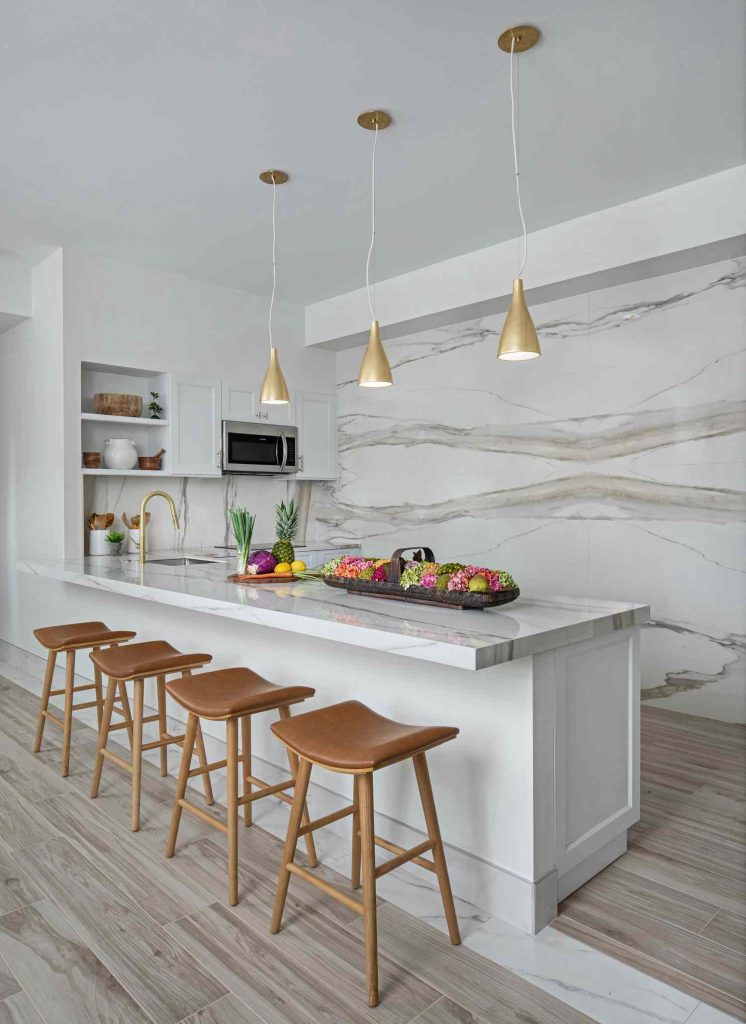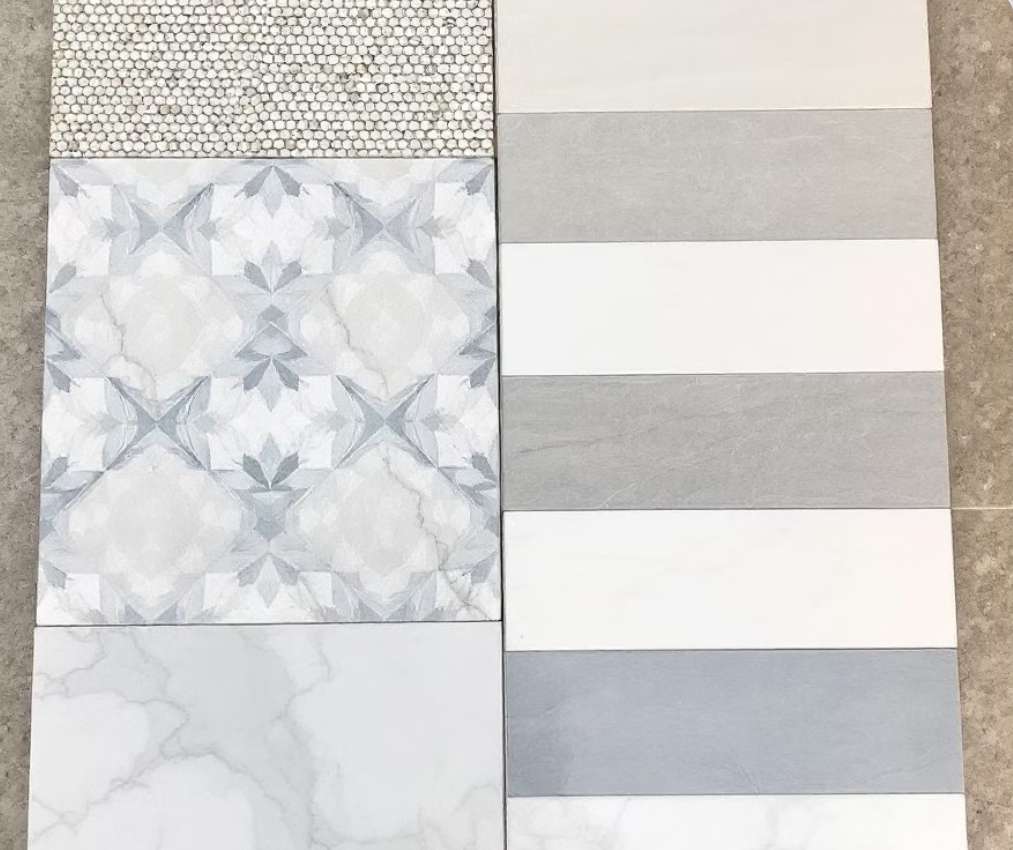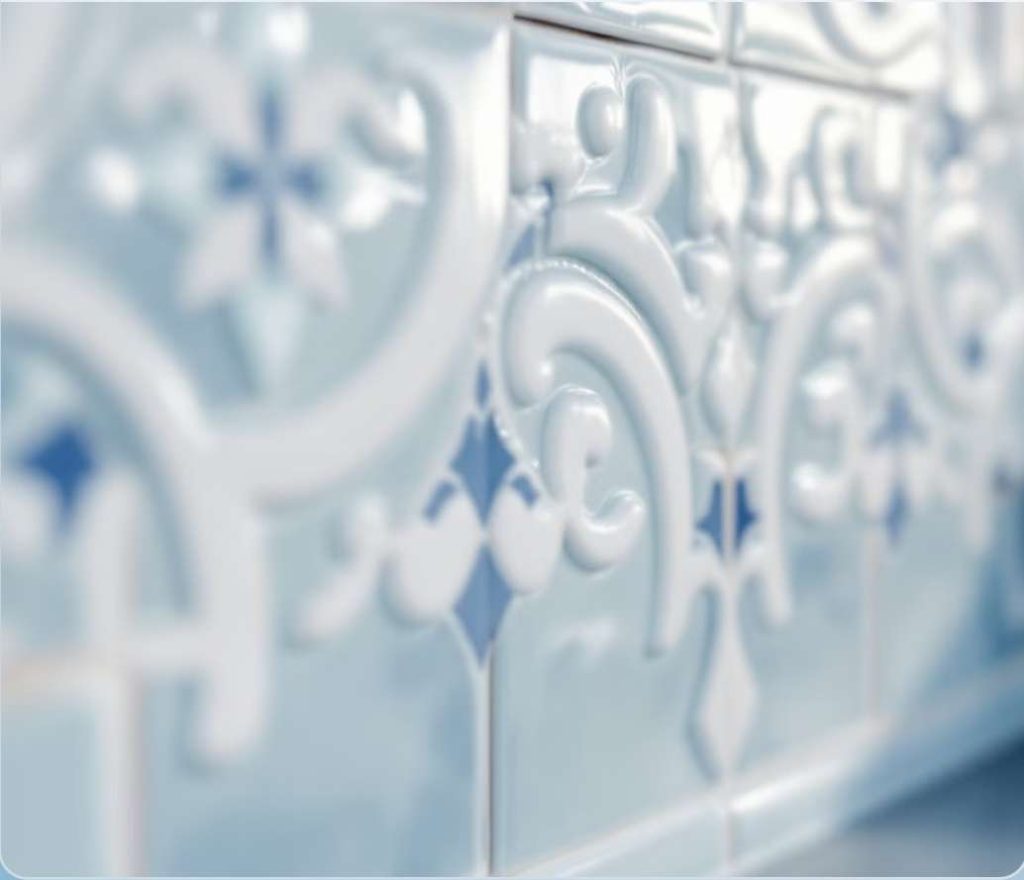Guide to choosing and installing kitchen tiles: key essentials.
Kitchen tiles are one of the most important components of interior design that, in addition to being beautiful, also help to improve the functionality of the kitchen space. Choosing the right tile can make a big difference in the appearance and functionality of your kitchen. In this article, we will examine the factors affecting the choice of kitchen tiles, types of tiles, the right adhesive, their installation and layout so that you can make the right choice that suits your taste and needs.
Factors affecting the choice of kitchen tiles
Choosing the right tile for your kitchen requires consideration of several factors. These factors not only affect the aesthetics of your kitchen, but also have a significant impact on its functionality. When choosing tiles, you should consider factors such as the tile material, design, dimensions, resistance to moisture and heat, ease of cleaning, and price.
- Tile material: Different tiles are made from different materials such as ceramic, porcelain, glass and natural stone. These materials have their own unique characteristics. For example, porcelain tiles have very low water absorption and are resistant to moisture, while ceramic tiles are usually more suitable for spaces with lower humidity. On the other hand, glass and stone tiles can give a stylish and luxurious look to the kitchen.
- Tile color and design: Choosing the color and design of the tile should be done carefully and with attention to the size of the space and the style of the kitchen design. Light colors can make the space appear larger and are suitable for small kitchens. While darker colors may be suitable for larger spaces and give the kitchen a modern and special look.
- Resistance to moisture and heat: The kitchen is a place that is exposed to a lot of moisture and heat, so you should use tiles that are resistant to these factors. Tiles that absorb a lot of water can cause stains and damage over time.
- Ease of cleaning: Since the kitchen is a place where food is cooked and used, tiles should have a smooth, non-absorbent surface that is easy to clean. Tiles with a glossy, smooth surface usually have this feature.
Benefits of using tiles in the kitchen
Using tiles in the kitchen has many benefits, including:
- Cleaning appliances: Tiles have a smooth, non-absorbent surface that makes cleaning the kitchen much easier. This feature is especially important for areas like the wall behind the stove and sink.
- Strength and durability: Tiles are usually very resistant and durable and can remain unchanged for years. This feature is especially valuable in spaces like the kitchen, which are constantly exposed to various damages.
- Heat resistance: Many tiles have the ability to withstand high heat and can be placed around stoves, ovens, and other heat sources without deforming.
- Variety of designs and colors: Tiles are available in a variety of designs, colors, and patterns that allow you to design a beautiful and unique kitchen. From simple designs to intricate and artistic designs, there are many options that you can choose from depending on your taste and needs.
- Moisture resistance: Tiles are moisture resistant, making them a good choice for kitchens with high humidity. Porcelain and ceramic tiles are particularly effective in this regard.


Tile adhesive suitable for kitchen tiles
One of the most important steps in installing kitchen tiles is choosing the right adhesive. Choosing the right adhesive can have a huge impact on the durability and stability of the tiles. Using poor quality adhesives can quickly cause the tiles to loosen and cause problems such as cracking. There are different adhesives for installing tiles, each with its own characteristics.
- Powdered tile adhesive: This type of adhesive is made from a combination of cement powder and other additives. Due to its high adhesion and reasonable price, powdered tile adhesive is a very suitable option for installing floor and wall tiles. This type of adhesive is also resistant to moisture and heat and is very suitable for wet spaces such as kitchens.
- Paste Tile Adhesive: Paste tile adhesive is ready to use and does not require mixing. This type of adhesive is usually suitable for installing lightweight tiles and in areas with less traffic. Paste adhesives can be used for small kitchen spaces or installing lighter tiles.
- Porcelain Tile Adhesive: This adhesive is a subset of powder adhesives that are suitable for installing porcelain tiles and natural stones. These types of adhesives have high resistance to moisture and temperature changes and are a good choice for use in kitchens that are exposed to a lot of water and steam.
Types of kitchen body tiles
Kitchen backsplash tiles come in many different types. These tiles are usually used for kitchen walls and vary greatly in material, design, and features. Common types include:
- Ceramic tiles: One of the most common types of tiles, they are very popular due to their affordable price and easy cleaning. These types of tiles are usually used for kitchen walls and are available in various designs and colors.
- Glass tiles: These tiles have a clear and shiny appearance and are suitable for special spaces or modern designs. In addition to being beautiful, glass tiles can reflect light and create a brighter and more open environment.
- Meter tiles: These tiles are larger in size and are used in larger spaces. Using larger tiles can speed up the installation process and add more beauty to the space.
- Patterned tiles: These types of tiles include tiles with geometric, floral, and artistic designs. These tiles are perfect for the wall behind the sink or specific areas of the kitchen that you want to make a statement.
Inter-cabinet tile designs and applications
Inter-cabinet tiles require special choices due to their limited space. In addition to their decorative use, these tiles can also act as a practical element against moisture and grease. The following are some of the different types of inter-cabinet tile designs:
- Glass tiles: These tiles are made of glass and are highly resistant to moisture. In addition, they are easy to clean and, due to their shine, reflect light and brighten the kitchen.
- Patterned tiles: Floral or geometric designs can also add beauty and variety to the kitchen in this space. These tiles can act as a focal point in the kitchen.

Criteria for selecting the right kitchen floor tile in recent years
When choosing the right tile for your kitchen floor, there are several key factors to consider:
- Wear resistance: Kitchen floor tiles should be wear-resistant so that they don’t get damaged by heavy traffic. Porcelain and ceramic tiles usually have this feature and can be good options for this space.
- Anti-slip: Choosing tiles with a non-slip surface can prevent potential hazards. This feature is especially important for kitchens where moisture and oil splashes are common.
- Moisture resistance: Porcelain and ceramic tiles are a good choice for kitchen floors because they do not absorb water. These types of tiles are also resistant to grease stains.
Tile price fluctuation trend
Tile prices have fluctuated significantly in recent years. This is because factors like raw material costs, transportation expenses, and market demand directly impact pricing. As a result, predicting accurate prices can be challenging. Therefore, it is always best to check with reputable sources for the latest updates. Additionally, purchasing tiles in bulk can help reduce overall costs, making it a cost-effective option for larger projects.
Important points in installing and arranging kitchen tiles
Installing tiles requires skill and precision. The most important points in this regard include the following:
- Cleaning the Substrate: Before installing the tiles, the surface must be completely clean and smooth. Any dust or grease can reduce the adhesion of the tiles.
- Using the right tools: Using a level, a brush, and a tile cutter is essential for accurate and neat installation. These tools will help you complete the installation correctly and accurately.
- Complete surface coverage: During installation, you should make sure that the entire surface of the subfloor is evenly and completely covered with tile adhesive. Using enough adhesive and pressing the tiles onto the subfloor is essential for proper installation.
Final tips for choosing the right kitchen tiles
To choose the right kitchen tile, it is recommended that you pay attention to the following points:
- Kitchen design: The tile should be chosen in accordance with the overall design of the kitchen. If your kitchen is designed in a modern style, use glass tiles. On the contrary, if you are following a classic style, ceramic tiles with traditional designs will be a good choice.
- Affordable: Make sure to choose tiles that are reasonably priced and of high quality. If you are looking to save on your budget, ceramic tiles are a good option.
- Ease of installation: The right adhesive and the right tools can make the installation process easier. If you plan to install the tiles yourself, use ready-made adhesives and simpler tools.
- Pay attention to functional features: Pay attention to the resistance properties of the tiles, such as waterproofness, heat resistance, and anti-slip properties.

Conclusion
When choosing the right tile for your kitchen, paying attention to detail and observing technical and aesthetic considerations is of utmost importance. By considering factors such as material, design, color, resistance to moisture and heat, and ease of cleaning, you can choose tiles that are not only beautiful, but also functional and durable in your kitchen.
Ceramic, porcelain, glass, and natural stone tiles each have their own unique characteristics that should be matched to your needs and taste. Using the right adhesives, such as powder, paste, and porcelain adhesives, also plays a significant role in the durability and strength of the tiles. Also, proper installation and the use of the right tools can help improve the quality and final beauty.
By considering these tips and consulting with experts, you can choose tiles that are not only beautiful, but also functional and durable in your kitchen.
